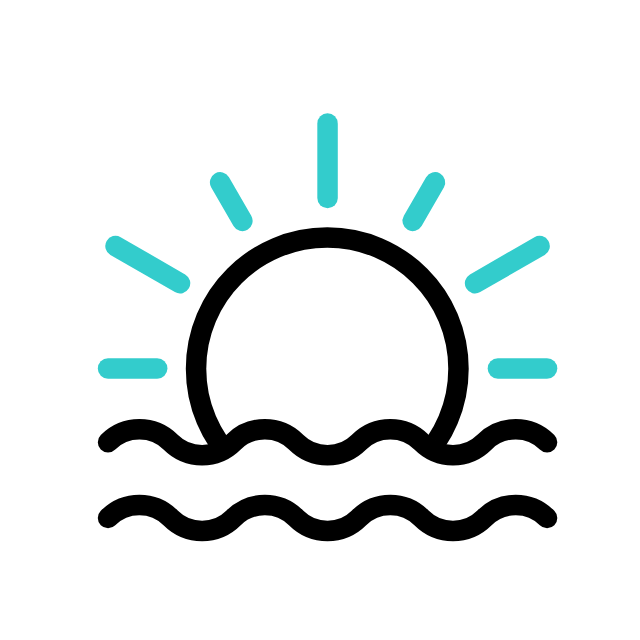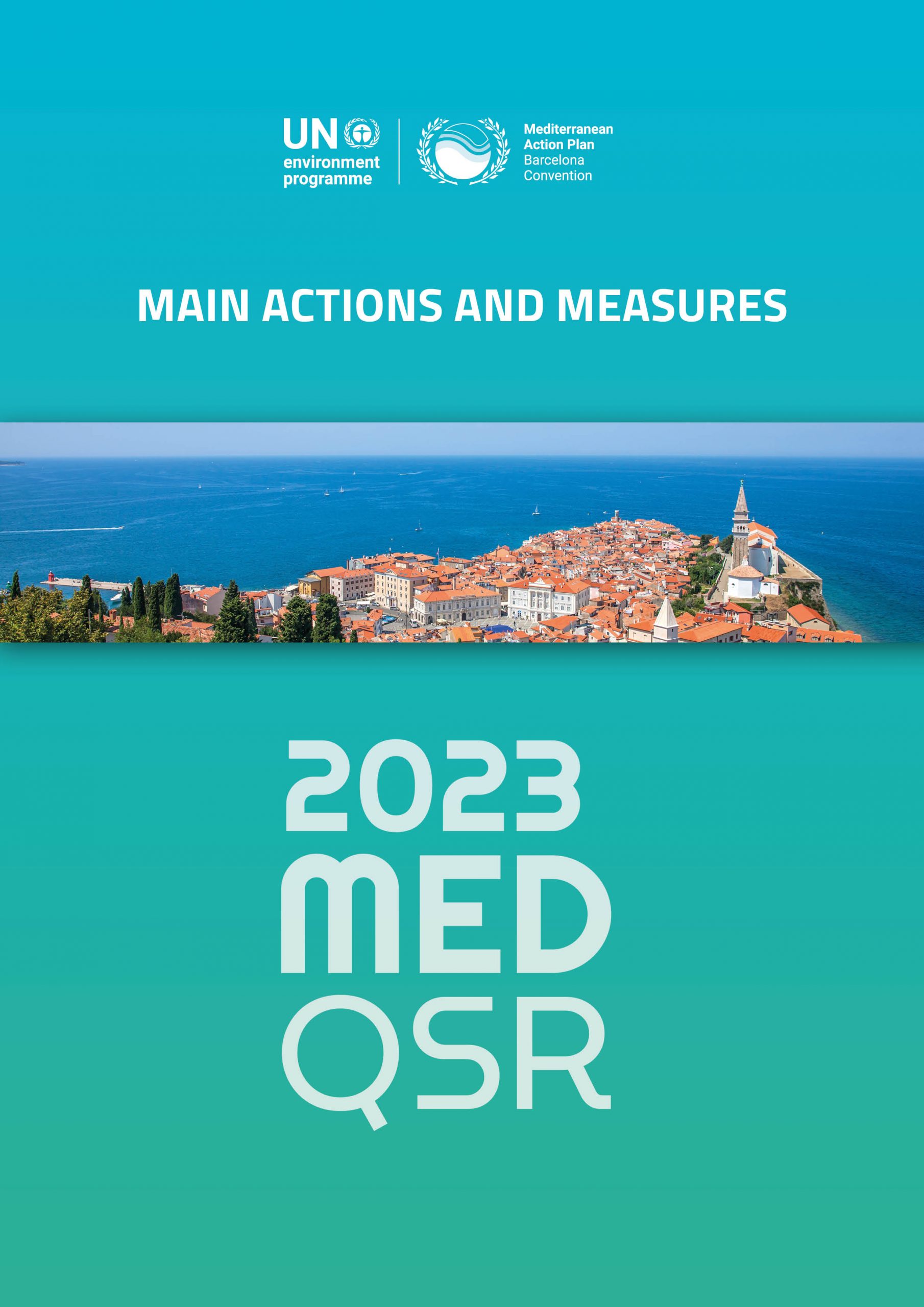2023 MED QSR WEB SITE INDEX

Main Actions and Measures Supported the work of UNEP/MAP for the Protection of the Mediterranean Sea and Coast since 2017 Med QSR
1291. Since the adoption of the 2017 MED QSR, a series of actions and measures were undertaken that supported the efforts made within the framework of UNEP/MAP – Barcelona Convention. The main measures adopted by the Contracting Parties to the Barcelona Convention since 2017 are:
- The UNEP/MAP Medium-Term Strategy 2022-2027 (MTS) adopted in 2021 as a key strategic framework for the development and implementation of the Programmes of Work of UNEP/MAP. It aims at achieving transformational change and substantial progress in the implementation of the Barcelona Convention and its Protocols, also providing a regional contribution to relevant Global processes.137
- Designation of the Mediterranean Sea Emission Control Area for Sulphur Oxides and Particulate Matter: The Contracting Parties to the Barcelona Convention successively adopted two consensual decisions at their 21st meeting (Naples, Italy, 2-5 December 2019) and 22nd meeting (Antalya, Türkiye, 7-10 December 2021) concerning the designation of the Mediterranean Sea Emission Control Area for Sulphur Oxides and Particulate Matter (Med SOX ECA), pursuant to Annex VI to the International Convention for the Prevention of Pollution from Ships (MARPOL).
- The Regional Plan on Urban Wastewater Treatment. It applies to the collection, treatment, reuse and discharge of urban wastewaters and the pre-treatment and discharge of industrial wastewater entering collecting systems from certain industrial sectors. Its objective is to protect the coastal and marine environment and human health from the adverse effects of the wastewater direct and or indirect discharges, in particular regarding adverse effects on the oxygen content of the coastal and marine environment and eutrophication phenomena as well as promote resource water and energy efficiency.
- Regional Plan on Sewage Sludge Management. It applies to the treatment, disposal and use of sewage sludge from Urban Wastewater Treatment Plants. Its objective is to ensure effective reuse of beneficial substances and exploitation of energy potential of sewage sludge, while preventing harmful effects on human health and the environment.
- The Updated Regional Plan on Marine Litter Management in the Mediterranean. The updated version of the Regional Plan further expands the provision of the version adopted in 2013, to include a number of additional elements, i.e., new definitions, expanded scope of measures in 4 principal areas (economic instruments, circular economy of plastics, land-based and sea-based sources of marine litter), and amendments targets for plastic waste and microplastics.
- The under development Regional Plans on (a) Agriculture, (b) Aquaculture, and (c) Storm Water, Management in the Mediterranean, which are expected to be approved by COP23 in December 2023.

- The Common Regional Framework for Integrated Coastal Zone Management. It provided the Methodological Guidance for Reaching Good Environmental Status (GES) through ICZM. Its objective is to support the implementation of the EcAp in a coordinated and integrated manner so to take all EOs and their GES into account through the implementation of the ICZM Protocol and other Protocols and related key documents.
- Following the emerging need to introduce MSP in the entire Mediterranean Region and to provide a planning tool to assist achieving GES of marine environment, the COP 20 (17-20 December 2017, Tirana, Albania) adopted the Conceptual Framework for Marine Spatial Planning as a guiding document to facilitate the introduction of this management tool into the Barcelona Convention framework, with the aim to further support achieving Good Environmental Status (GES) of the Mediterranean Sea and Coasts; investigate in more details connections between land and sea areas; and propose coherent and sustainable land and sea- use planning frameworks relating with key economic sectors and activities that may affect the coastal and marine resources.
- In order to provide best assistance to the CPs for the implementation of Marine Spatial Planning a MSP Workspace has been prepared and training provided for the region’s planners and other MSP practitioners who can access information and tools, and share knowledge, news and insight on MSP. https://msp.iczmplatform.org/
- The Post-2020 SAPBIO138 and the Post-2020 Regional MCPAs and EOCMs Strategy139, both adopted in 2021 as action-oriented policies for the preservation of the marine and Coastal Biodiversity that contribute to achieve the respective targets of the Sustainable Development Goals and the CBD Post-2020 Global Biodiversity Framework, through the optic of the Mediterranean context.
- The Mediterranean Strategy for the Prevention of, Preparedness, and Response to Marine Pollution from Ships (2022-2031). Adopted in 2021 to enhance the implementation of the Protocol concerning Cooperation in Preventing Pollution from Ships and, in Cases of Emergency, Combating Pollution of the Mediterranean Sea. It sets seven Common Strategic Objectives addressing key ships related environmental issues (pollution, climate change, air emission, marine litter (plastic and), Nin-Indigenous Species, designation of special areas, emerging issues related to pollution from ships in the Mediterranean). Its implementation is supported by an Action Plan made of 190 specific actions expected to be implemented in the next ten years.
- The Strategic Action Programme to address pollution from land-based activities (SAP- MED) adopted in 1997 as a long-term policy (2000-2025) focused on combatting pollution from land-based sources and activities and their impact on marine and coastal environment. Its objective is to improve the quality of the marine environment of the Mediterranean through facilitating the implementation by the Contracting Parties of the LBS Protocol and promoting shared-management of the land-based pollution. The SAP-MED was designed to assist Parties in taking actions individually or jointly within their respective policies, priorities and resources, which will lead to the prevention, reduction, control and/or elimination of the degradation of the marine environment, as well as to its recovery from the impacts of land- based activities.
- The Ballast Water Management Strategy for the Mediterranean Sea (2022-2027) adopted in 2021 updates a first strategy in 2012. The overall objectives of this Strategy are to: (i) establish a framework for a regional harmonised approach in the Mediterranean on ships’ ballast water control and management which is consistent with the requirements and standards of the Ballast Water Management Convention; (ii) initiate some preliminary activities related to the management of ships’ biofouling in the Mediterranean region; and (iii) contribute to the achievement of GES with respect to NIS as defined in IMAP.
- The Regional Action Plan on Sustainable Consumption and Production in the Mediterranean adopted in 2016 as a substantive contribution by the Mediterranean Region to the implementation of the 2030 Agenda for Sustainable Development. It defines common objectives and identifies actions guiding the implementation of the sustainable consumption and production at the national level, addressing, as appropriate, key human activities which have a particular impact on the marine and coastal environment and related transversal and cross-cutting issues.
137, 138, 139
137 In particular the 2030 Agenda for Sustainable Development and its Sustainable Development Goals (SDGs), the UN Decade on Ecosystem Restoration, the UN Decade of Ocean Science for Sustainable Development and the UNEP’s Medium-Term Strategy 2022-2025, approved at UNEA-5 in February 2021.
138 The Strategic Action Programme for the Conservation of Biodiversity and Sustainable Management of Natural Resources in the Mediterranean Region (Post-2020 SAPBIO). It was adopted in 2021
139 The Post-2020 Regional Strategy for marine and coastal protected areas and other effective area- based conservation measures in the Mediterranean.

1292. The UNEP/MAP efforts for the preservation of the Mediterranean Sea and Coast are a contribution from the region to achieve global objectives in relation to the marine environment. In addition to providing a regional contribution to achieve the relevant Sustainable Develop Goals, the action of UNEP/MAP is harmonised with the following global processes since 2017:
- UN Decade on Ecosystem restoration (2021-2030).
- UN Decade of Ocean Science for Sustainable Development (2021-2030).
- UNEP Regional Seas Strategic Directions 2022-2025.
- The Ecosystem Approach: Towards a practical application across Regional Seas Conventions and Action Plans.
- UNEP Marine and Coastal Strategy 2020-2030.
- Post-2020 global biodiversity framework (CBD).
- United Nations Environment Assembly: UNEA-3 (December 2017), UNEA-4 (March 2019), UNEA-5 (February 2021).
- The relevant Decisions of UNFCCC COP 27 ( Sharm el-Sheikh from 6 to 20 November 2022).
- The Intergovernmental Negotiating Committee (INC) mandated to develop legally binding global treaty to control plastic pollution.
1293. In addition to the measures undertaken within the framework of the UNEP/MAP, the conservation of the Mediterranean Sea and Coast benefited from measures adopted as part of European Union policies of relevance for the Mediterranean marine and coastal environment. These included in particular:
- The EU Sustainable blue economy, new approach.
- The EU Biodiversity strategy for 2030.
- The EU Nature restoration Law proposal.
- The EU Circular economy action plan.
- The EU MSP Directive and implementation.
- The EU Green Deal for the Climate neutrality.
- The EU Marine Strategy Framework Directive.
- The EU Plastics Strategy.
- The EU Single-use Plastic Directive.
- The EU Green Deal Policy Framework.
- The EU Waste Framework Directive.
- The EU Revised Port Reception Facilities Directive.
main actions and measures

